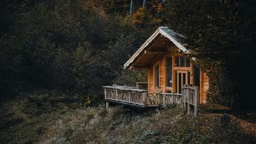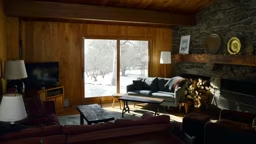
The warmth of cabin living can be felt in the charm of a structure’s rustic character combined with the experiences shared with family and friends. Yet, for those of us who don’t limit our cabin use to summertime, we also want our cabins to keep us warm when it’s cold.
If you’re planning a cross-country ski weekend, and you arrive at a frozen cabin, an open fireplace will do little to heat the thermal mass of the structure until you’re ready to leave on Sunday. It will take a lot of hot grog to warm your spirits, and you will be contemplating heating alternatives for your next winter sojourn.
So, what are your options? A wood stove gives off heat quicker. Then again, some electric heating units you could have turned on from your cell phone a few days earlier might have been a better solution. With so many factors and options to consider, here are a few things to keep in mind:
Analyzing the Situation
When it comes to cabin warmth, there are many choices, and they all start with understanding the use pattern of your favorite getaway. Are you likely to use the place only for a few winter weekends or do you want to keep the plumbing in working order all winter long? You’ll also need to know what energy supplies you have access to: trees, electricity, gas, wind generation. Heating our cabins is quite different from heating our homes in or near the metropolis. There, we usually have access to electricity and natural gas.
Choices for Heating
Wood-Burning Options
At our primary homes, most of us don’t have patience for high temperature swings so we seek to air condition for part of the season. Thus, forced-air systems driven by gas or electricity are the preferred choice. Cabins, on the other hand, are a natural for using some form of wood heat, since we often build our retreats near or in a forest. In addition, if we aren’t keen on chain saws and wood splitting, there is usually someone nearby willing to sell us a cord or two of wood. And who doesn’t enjoy the flickering flame and smell of burning wood? Consider using insulation that’s 50% greater than code to boost your energy savings. The best burning device is a wood stove, or a sealed fireplace that performs like a wood stove. A thorough study of wood-burning performance will help you select the stove that’s best for you. If you’re the person responsible for splitting the wood, it won’t take but a few seasons to appreciate that you’ll need only two cords of wood instead of four to make it through a heating season.
Backup Heat Source
But even with a good warm coat, you’ll still need a source of heat when you’re not around. Here is where everything gets more complicated. Heat has two major components: a fuel source and a distribution system. On the source side, you’ll have to research what’s available at your site: electricity, natural or propane gas, fuel oil, or geothermal, which is also run off of electricity. On the distribution side, you have forced air, hydronic infloor heat, radiators, or direct-current electric heaters. And for the most part, several of the fuel sources work with several of the distribution systems. Prices for fuel vary over time, so it’s best to study recent price history and reflect on what experts predict for the prices in the future. You might even consider two fuel sources, so you can play with energy markets. Some local power companies offer off-peak rates for heating systems, which use heat storage.
Planning Ahead
If you’re planning to build (or rebuild) a cabin, you can request additional insulation for exterior walls, the ceiling and even under the slab. Check local building codes to find out what the recommended R-value is for your location. Then, you might want to consider using insulation that’s 50% greater than code to boost your energy savings. Installing energy-efficient windows is another way to increase comfort value, as well as long-term dollar savings. Think of your cabin just like that warm parka you put on in the winter, down-filled and snug as a bug.










